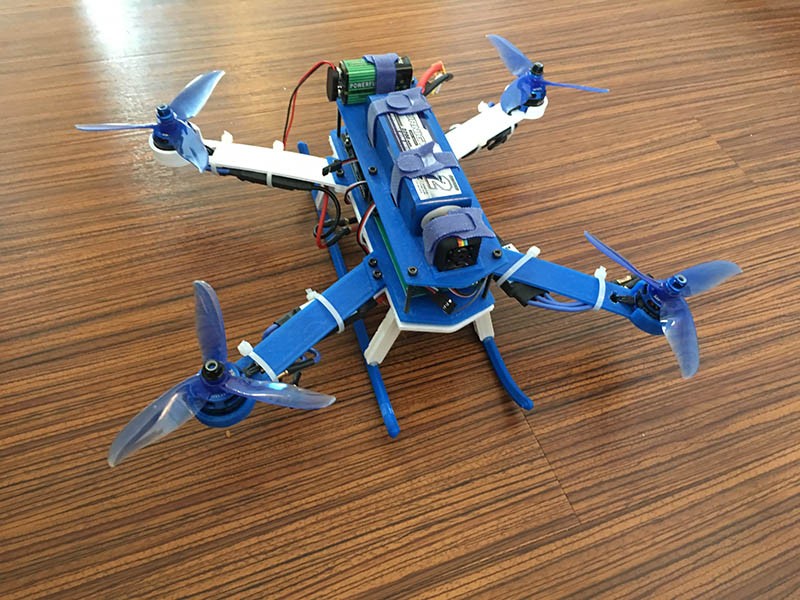AIAA Quadcopter Project Contributes to Student Learning

We asked John Harding ’20 EE, president of Villanova University’s chapter of the American Institute of Aeronautics and Astronautics, questions concerning the quadcopter, an unmanned helicopter with four rotors that students have been constructing this year.
What are you building? / What exactly is the quadcopter?
We are building an Arduino-driven quadcopter with a variety of features that go beyond the features of a standard quadcopter. Our quadcopter features a GoPro for capturing aerial footage and Bluetooth for near-field data transfer. Additionally, our project has implemented a GPS system in order to track the path of flight, as well as interface with the Arduino so that more ambitious expansions can be developed later. One idea we have in the pipeline is the ability for the quadcopter to follow the tracked path back to the initial starting point using the GPS coordinates that were recorded.
Why are you building the quadcopter?
We are largely building the quadcopter in order to give our members an exciting project that keeps everyone involved. More importantly however, we are building the quadcopter to highlight the many disciplines of engineering and variety of skills present at Villanova.
What do you take away from the project? What do you learn?
Collectively, our electrical engineering majors learned a significant amount about controls system design, as well as the Arduino platform, and our mechanical engineering majors were able to effectively design, develop and 3-D print an airframe. On top of that, we all learned how to fly a quadcopter.
How is the project relevant to students career-wise?
This project and others like it are incredibly relevant to students’ careers since it encompasses everything employers look for. With our project, several members were able to demonstrate effective distribution of a significant workload, show an ability to work with a team, learn new skills, and constructively use them.
